The Kamchatka Peninsula is a paradise for birdwatchers, with over 300 species of birds living in the area.
From the majestic Steller’s Sea Eagle to the unique Blakiston’s Fish Owl, this remote and rugged region of Russia is home to some of the rarest and most beautiful birds in the world. Many of these species are endemic to Kamchatka, making it a must-visit destination for birders.
The peninsula also offers a unique opportunity to observe a variety of seabirds, such as the Tufted Puffin, the Red-legged Kittiwake, and the Slaty-backed Gull.
Whether you are looking for species to photograph or just want to enjoy the beautiful scenery, Kamchatka has something to offer for all birders.
1. Tufted Puffin
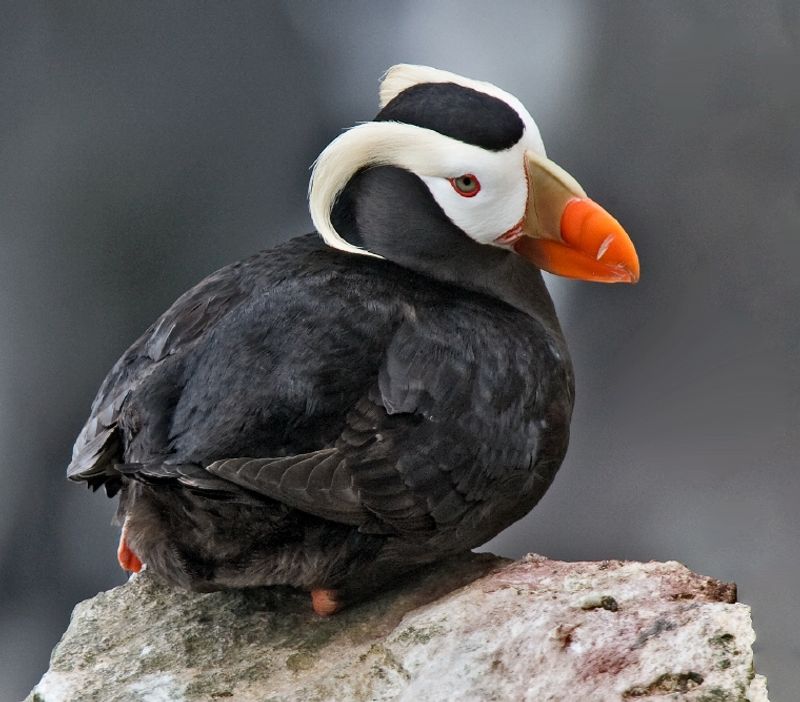
The Tufted Puffin is a seabird that belongs to the Auk family and is found in the North Pacific Ocean. It is one of three species of puffin in the Fratercula genus. These birds are quite distinct in their appearance, with a thick, red bill and yellow tufts on their heads.
They are considered to be medium-sized seabirds and are relatively abundant in the ocean. These birds are excellent swimmers, with their wings adapted for underwater flight. They often form large colonies and feed on fish, squid, and crustaceans.
They nest in cavities on cliff sides and lay one or two eggs each year.
The chicks are born with a thick, white down, which they quickly shed and replace with adult plumage. The Tufted Puffin is a valuable species to humans, as it is an important part of the marine ecosystem.
Its presence helps to keep the waters clean, as it feeds on smaller fish and invertebrates. Additionally, these birds are a popular sight along the coasts of the North Pacific, and their presence is often welcomed by beach-goers and fishermen.
| Kingdom | Animalia |
| Phylum | Chordata |
| Class | Aves |
| Order | Charadriiformes |
| Family | Alcidae |
| Genus | Fratercula |
| Species | F. cirrhata |
2. Kamchatka Leaf Warbler
The Kamchatka leaf warbler is a species of bird belonging to the family of leaf warblers. This species was previously considered to be part of the “Old World warbler” family, which is a group of birds that are closely related.
The Kamchatka leaf warbler is most closely related to the Arctic warbler and the Japanese leaf warbler. In fact, it was once believed that the Kamchatka leaf warbler, the Arctic warbler, and the Japanese leaf warbler were all the same species.
However, recent studies have shown that they are in fact three distinct species. All three species share many similarities, such as their song, habitat preferences, and migration patterns, but the Kamchatka leaf warbler is the only species found in the Kamchatka Peninsula.
This species is a beautiful bird and is admired for its unique plumage and coloration.
| Kingdom | Animalia |
| Phylum | Chordata |
| Class | Aves |
| Order | Passeriformes |
| Family | Phylloscopidae |
| Genus | Phylloscopus |
| Species | P. examinandus |
3. Siberian Accentor
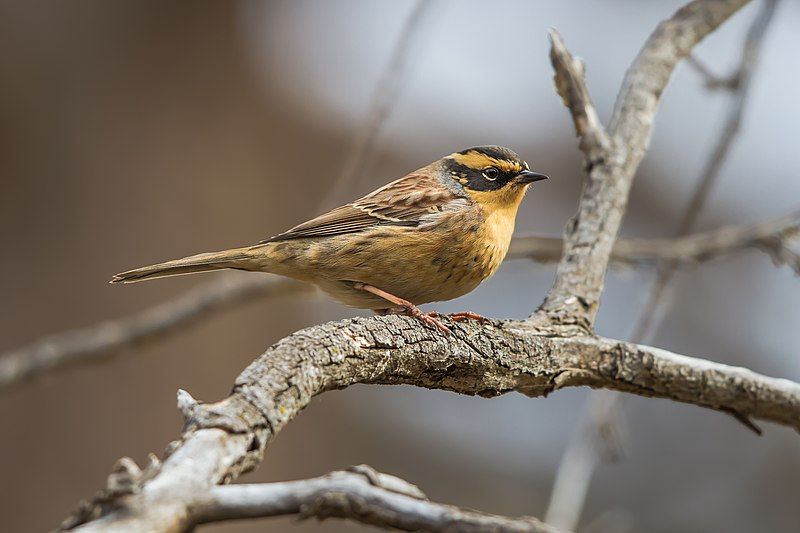
The Siberian Accentor is a small type of songbird that is native to northern Russia, from the Ural Mountains and eastward across Siberia. During the colder months, these birds migrate to the east, wintering in areas such as Korea and eastern China.
On rare occasions, some of these birds have been spotted in Western Europe and even northwestern North America. The Siberian Accentor is a brown-colored bird with streaked bellies and grayish-brown heads.
This species of bird is known for its sweet singing, which is composed of a variety of fluting trills. The Siberian Accentor typically builds its nest on the ground in a sheltered spot, such as a crevice in a rock wall or a hollow log.
The birds feed mainly on insects and berries, with some also consuming grains and seeds. Overall, the Siberian Accentor is a unique species of bird that is native to the area of northern Russia.
They migrate to the east during the winter months and can occasionally be found in other parts of the world. This species of bird is known for its sweet singing, and they feed mainly on insects and berries.
| Kingdom | Animalia |
| Phylum | Chordata |
| Class | Aves |
| Order | Passeriformes |
| Family | Prunellidae |
| Genus | Prunella |
| Species | P. montanella |
4. Far Eastern Curlew
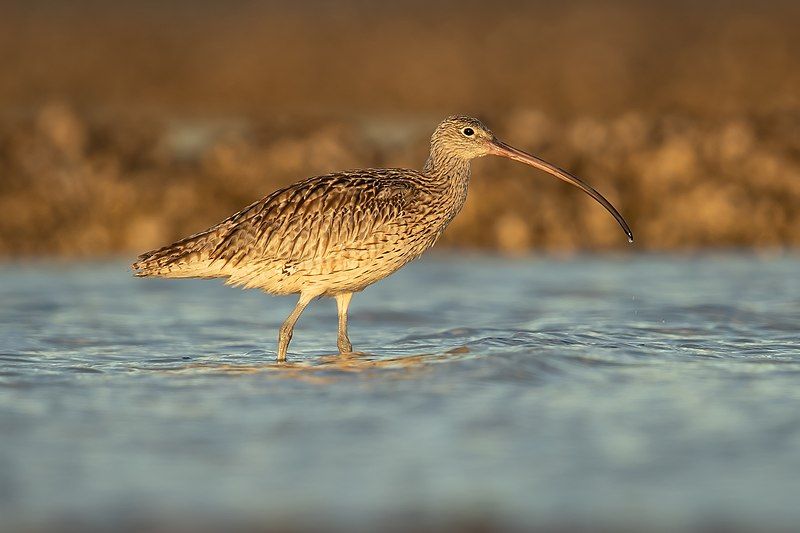
The Far Eastern curlew is a large shorebird that shares many features with the long-billed curlew. It is slightly larger than its cousin and has a plain, unpatterned brown underwing, which sets it apart from other curlew species.
The Far Eastern curlew has a mostly brown coloration, with a few white feathers on the head and breast. Its bill is long and slightly curved, and the legs are a dull gray. It is a solitary bird, found along the shores of eastern Asia, from Korea to northern Japan.
The Far Eastern curlew is a ground feeder, consuming insects, crustaceans, and other small invertebrates. It is also known to eat small fish, shellfish, and the occasional plant material.
The Far Eastern curlew is a vulnerable species, due to habitat destruction and the introduction of invasive species. It is listed as near-threatened by the International Union for Conservation of Nature (IUCN).
Conservation efforts are underway to protect the species, but much more needs to be done to ensure its survival.
| Kingdom | Animalia |
| Phylum | Chordata |
| Class | Aves |
| Order | Charadriiformes |
| Family | Scolopacidae |
| Genus | Numenius |
| Species | N. madagascariensis |
5. Whiskered Auklet
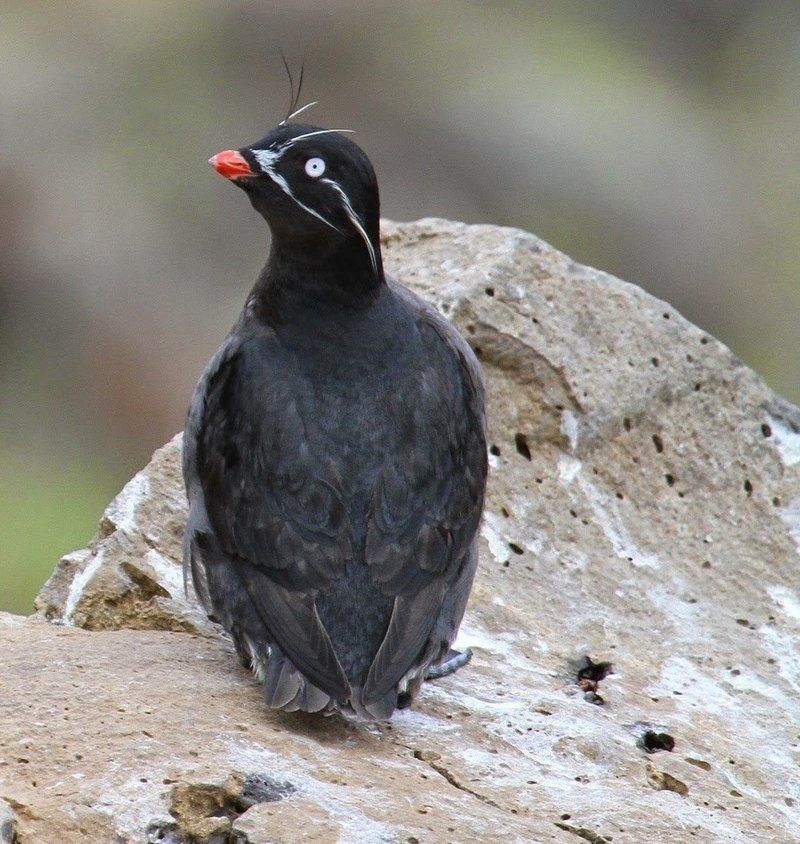
The whiskered auklet is a small seabird belonging to the auk family. It is part of the genus Aethia and has a more limited range than other members of its family. This species is found around the Aleutian Islands and some islands off the coast of Siberia.
Additionally, the whiskered auklet breeds on these islands, making them its primary habitat. The whiskered auklet is a colorful bird, with a black head, brown back, and white chest. It has a unique feature of long, white whiskers, which give it its name.
During the breeding season, the bird is known to gather in large colonies and is often seen in large flocks. It feeds on fish, marine invertebrates, and other small prey, such as crustaceans and mollusks.
The whiskered auklet is an important species to the local ecosystem, as it helps to keep prey populations in check. Unfortunately, this species is threatened by human activities such as pollution, climate change, and recreational activities.
To help protect this species, conservation efforts such as habitat protection and limiting human activities in its habitat are important.
| Kingdom | Animalia |
| Phylum | Chordata |
| Class | Aves |
| Order | Charadriiformes |
| Family | Alcidae |
| Genus | Aethia |
| Species | A. pygmaea |
6. Grey-tailed Tattler
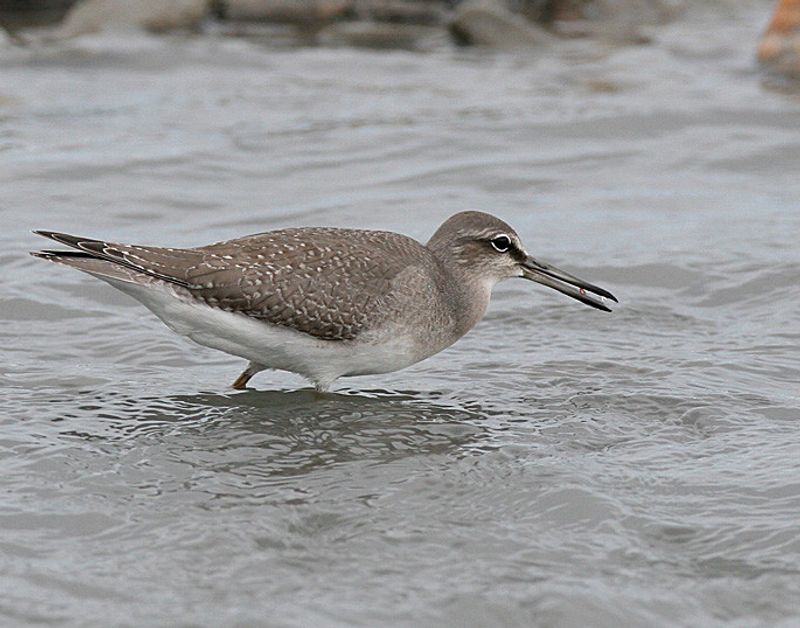
The grey-tailed tattler is a small bird belonging to the genus Tringa, which can be found in the coastal regions of Siberia and Polynesia. This species of shorebird is also known by its other names, the Siberian tattler and the Polynesian tattler.
It is aptly named due to its loud and distinctive call. The call of the grey-tailed tattler is a loud, sharp “tater-lur” sound, which can be heard over long distances.
This call is used for the tattler to communicate with other tattlers, as well as to warn other birds of potential danger. It is also believed that the call is used to attract potential mates.
The call of the grey-tailed tattler is one of its most defining features and is what has earned it its name..
| Kingdom | Animalia |
| Phylum | Chordata |
| Class | Aves |
| Order | Charadriiformes |
| Family | Scolopacidae |
| Genus | Tringa |
| Species | T. brevipes |
7. Black Scoter
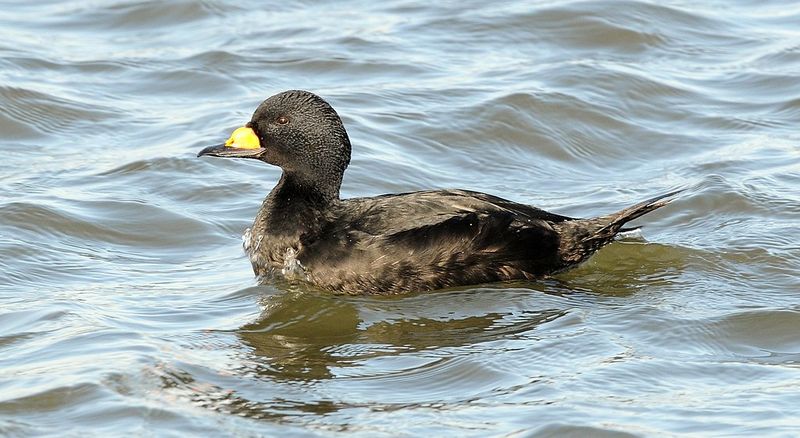
The black scoter, or American scoter, is a species of large sea duck found around the world, with an average length of 43 to 49 cm. The name of the genus, Melanitta, is derived from two words in Ancient Greek: melas, meaning “black”, and Netta, meaning “duck”.
Similarly, the species name of the black scoter, Americana, is derived from the Latin word for “American”. This name was chosen to distinguish this species of sea duck from similar-looking ducks found in other parts of the world.
The black scoter is commonly found in coastal waters, where it feeds on small aquatic organisms like molluscs, crustaceans, and small fish. The birds typically flock together in large numbers, and they are known to travel long distances during their migration.
The black scoter is also known to form strong pair bonds, and they often mate for life.
| Kingdom | Animalia |
| Phylum | Chordata |
| Class | Aves |
| Order | Anseriformes |
| Family | Anatidae |
| Genus | Melanitta |
| Species | M. americana |
8. Slaty-backed Gull
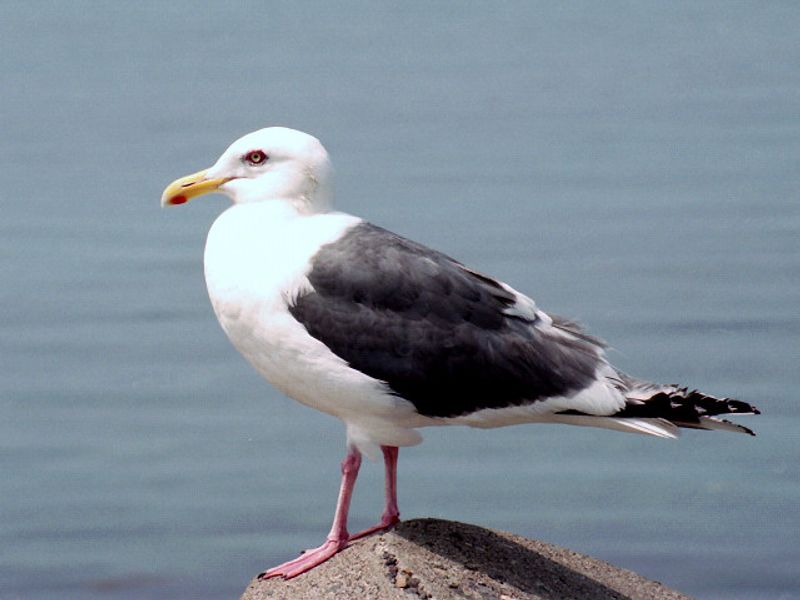
The slaty-backed gull is a large, distinctive bird that can be found breeding along the northeastern coast of the Palearctic region. Its head is white, with a gray mantle and a slaty-black back, wings, and tail.
It is easily distinguished from the western gull and the glaucous-winged gull, which have similar coloring but more muted hues.
During the non-breeding season, the slaty-backed gull is known to travel widely, from its breeding grounds in the Palearctic to other areas of the world. It is an opportunistic feeder, feeding on fish, crustaceans, mollusks, and insects, as well as carrion and garbage.
The slaty-backed gull is an important species for many coastal communities, as it helps to keep populations of fish and other marine life in balance.
| Kingdom | Animalia |
| Phylum | Chordata |
| Class | Aves |
| Order | Charadriiformes |
| Family | Laridae |
| Genus | Larus |
| Species | L. schistisagus |
9. Red-faced Cormorant
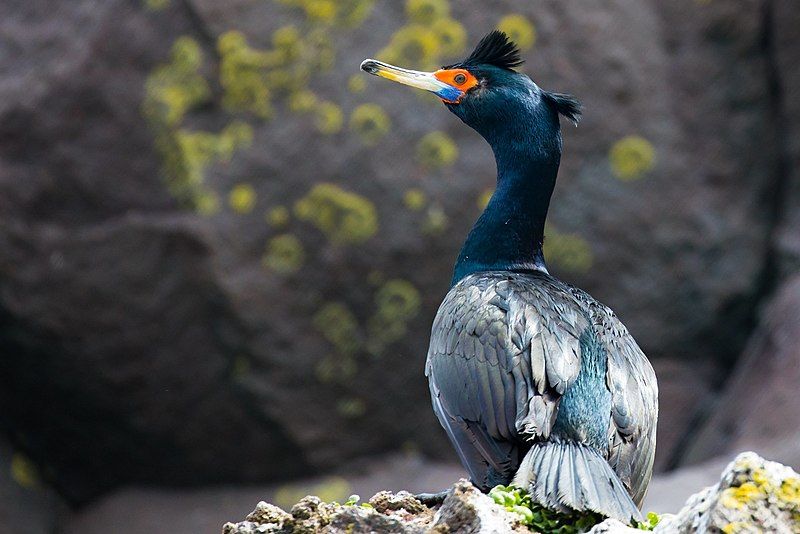
The red-faced cormorant, red-faced shag, or violet shag is a species of bird found in the family Phalacrocoracidae. This species is found on the coasts of New Zealand, Australia, and some nearby islands.
It is a medium-sized cormorant, about 40 cm long, with a black body, grey wings, and a bright red face patch. The bill is black and the legs are yellow. It is a social species, usually found in small flocks, often near or on the water.
It feeds mainly on small fish, crustaceans, and other aquatic creatures, which it dives for in shallow water. It nests in coastal cliffs or on rocky islands and lays a clutch of two to four eggs.
The red-faced cormorant is a fairly common species and is not considered threatened.
| Kingdom | Animalia |
| Phylum | Chordata |
| Class | Aves |
| Order | Suliformes |
| Family | Phalacrocoracidae |
| Genus | Urile |
| Species | U. urile |
10. Yellow-breasted Bunting
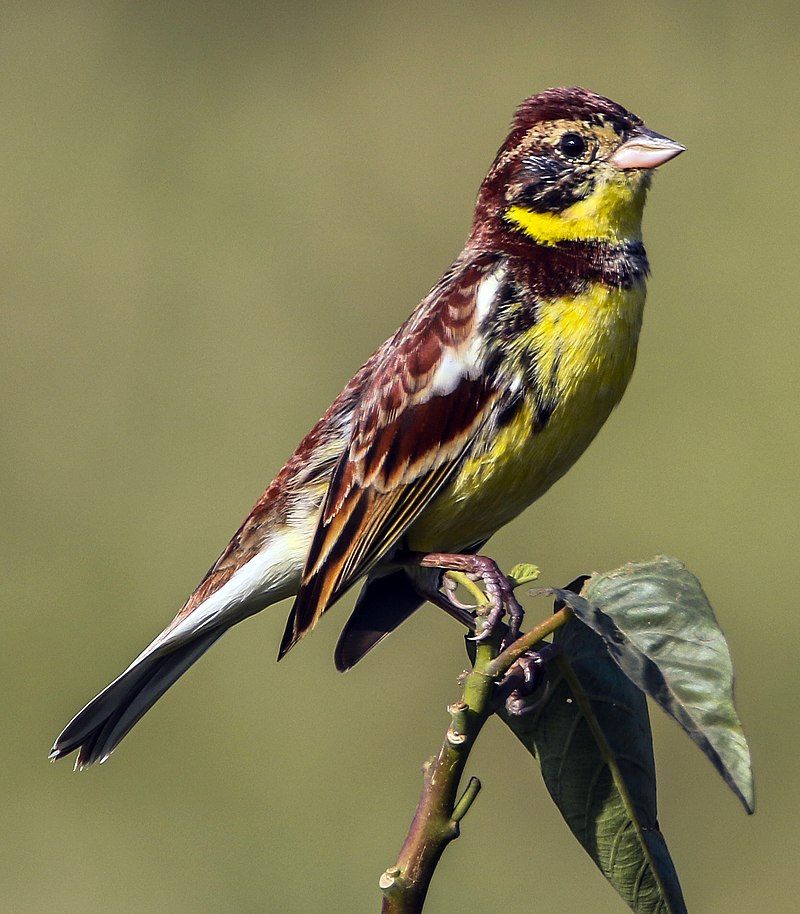
The yellow-breasted bunting is a type of passerine bird, belonging to the Emberizidae family. Passerine birds are songbirds, often referred to as perching birds, due to their common perching behavior.
The Emberizidae family is a large family of birds, consisting of various buntings and sparrows. This particular species of bird is found across the Boreal and East Palearctic regions. The genus name Emberiza originates from Old German, where it was called Embritz.
The species name aureola is Latin for “golden”, which is likely related to the yellow-breasted bunting’s distinctive coloring. This species of bird is easily recognizable due to its yellow chest and throat, and its white belly and wings.
| Kingdom | Animalia |
| Phylum | Chordata |
| Class | Aves |
| Order | Passeriformes |
| Family | Emberizidae |
| Genus | Emberiza |
| Species | E. aureola |
11. Glaucous-winged Gull
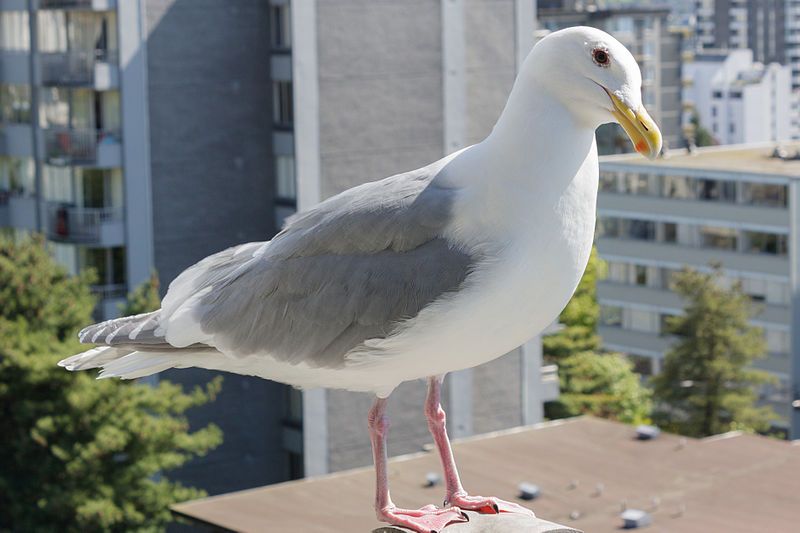
The glaucous-winged gull is a large seabird that is easily identifiable by its white-headed plumage. Its genus name, Larus, is derived from Latin and appears to have originally referred to a species of gull.
The species name, glaucescens, is a Neo-Latin term that is derived from the Ancient Greek, glaukos, referring to the grey color of its wings. This grey coloration is what gives the gull its distinctive look and makes it easily distinguishable from other birds.
The glaucous-winged gull’s wingspan is quite large, ranging from about 40-50 inches, and its body is overall white with greyish-brown accents.
The bird is a strong flier and can often be seen soaring above the coastal waters of North America, as well as other parts of the world.
| Kingdom | Animalia |
| Phylum | Chordata |
| Class | Aves |
| Order | Charadriiformes |
| Family | Laridae |
| Genus | Larus |
| Species | L. glaucescens |
12. Parakeet Auklet
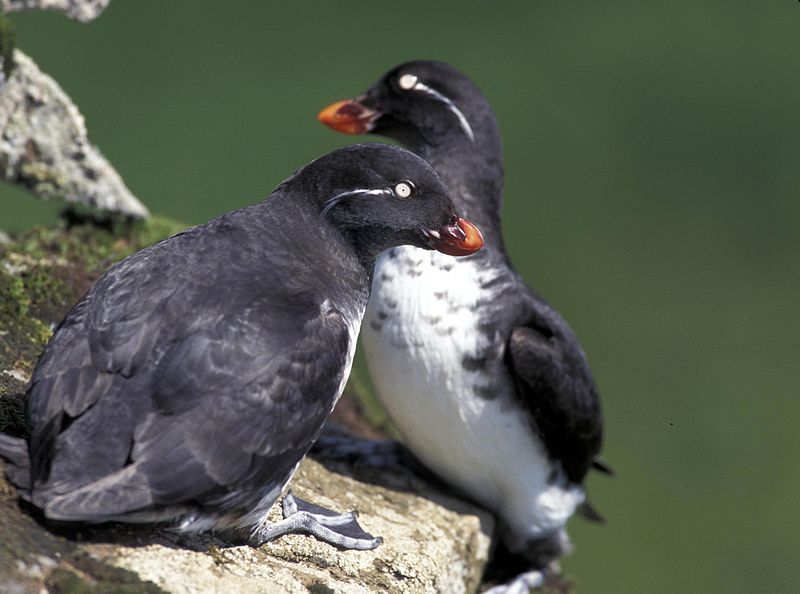
The Parakeet Auklet is a small seabird that is found in the North Pacific region.
It was once classified as its own genus, Cyclorrhynchus, however, recent studies on its morphological and genetic makeup have shown that it is more closely related to the Crested Auklets and Least Auklets.
This has led to the suggestion of reclassifying the Parakeet Auklet into the genus Aethia. The Parakeet Auklet is similar in size to the Crested Auklet and the Least Auklet, with a body length of around 22 cm.
It has distinct features such as a black bill, yellow eye-ring, white back, and a white throat.
It also has a black crown and nape, as well as a white line that runs across its forehead. Morphologically, the Parakeet Auklet has certain traits that make it similar to its relatives in the Aethia genus.
Its bill shape and size, as well as its overall body shape and size, are similar to the Crested Auklet and the Least Auklet.
Additionally, the Parakeet Auklet has a darker bill than its relatives. Genetically, the Parakeet Auklet also has similar characteristics to those of the Crested Auklet and the Least Auklet.
Studies have shown that the Parakeet Auklet shares more genetic similarities with its relatives than with any other species in its former genus, Cyclorrhynchus. This suggests that the Parakeet Auklet should be placed in the genus Aethia.
Overall, the Parakeet Auklet is closely related to the Crested Auklet and the Least Auklet, both morphologically and genetically. This has led to the suggestion of reclassifying the Parakeet Auklet into the genus Aethia.
This reclassification would more accurately reflect the Parakeet Auklet’s relationship to its relatives in the Aethia genus.
| Kingdom | Animalia |
| Phylum | Chordata |
| Class | Aves |
| Order | Charadriiformes |
| Family | Alcidae |
| Genus | Aethia |
| Species | A. psittacula |
13. Aleutian Tern
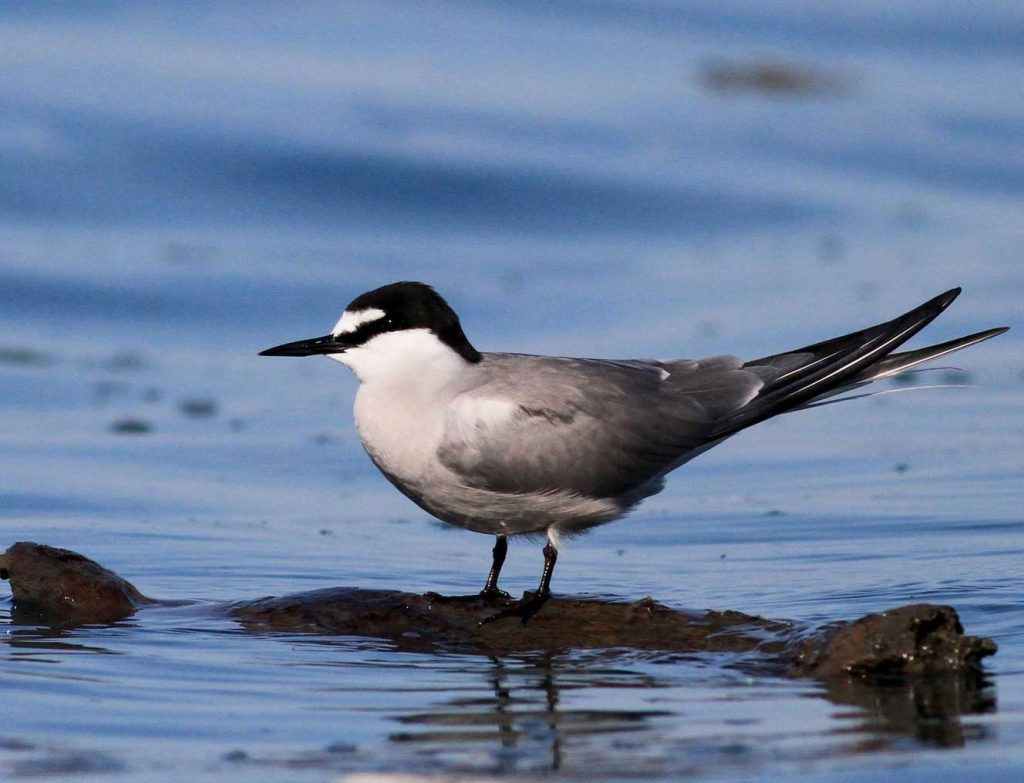
Source: ebird.org
The Aleutian tern is a migratory bird species that lives in the subarctic regions of the world for most of the year. It is often mistaken for the Arctic tern since both species sport a black cap. However, the Aleutian tern can be easily distinguished by its white forehead.
This white forehead is not present in the Arctic tern, making it an easy way to tell them apart. The Aleutian tern is a highly migratory bird, flying between the subarctic and Arctic regions of the world throughout the year.
During its migrations, it covers large distances, often crossing the northern hemisphere in its journeys. It typically spends the warmer months in the subarctic region and the colder months in the Arctic region.
In both regions, it feeds on a variety of fish, crustaceans, and insects. The Aleutian tern is also a highly social species, often gathering in large flocks and performing aerial displays.
These displays serve to strengthen the bond between members of the flock and to attract potential mates. The Aleutian Tern is also known for its vocalizations, which can range from harsh squawks to high-pitched trills.
The Aleutian tern has a long history of being associated with the Arctic tern. This is due to their similar appearances and the fact that they inhabit the same regions of the world.
Even though they may look similar, the Aleutian tern can be distinguished from the Arctic tern by its white forehead. This small, but distinctive, feature makes it easy to identify the Aleutian tern in a crowd.
| Kingdom | Animalia |
| Phylum | Chordata |
| Class | Aves |
| Order | Charadriiformes |
| Family | Laridae |
| Genus | Onychoprion |
| Species | O. aleuticus |
14. Thick-billed Murre
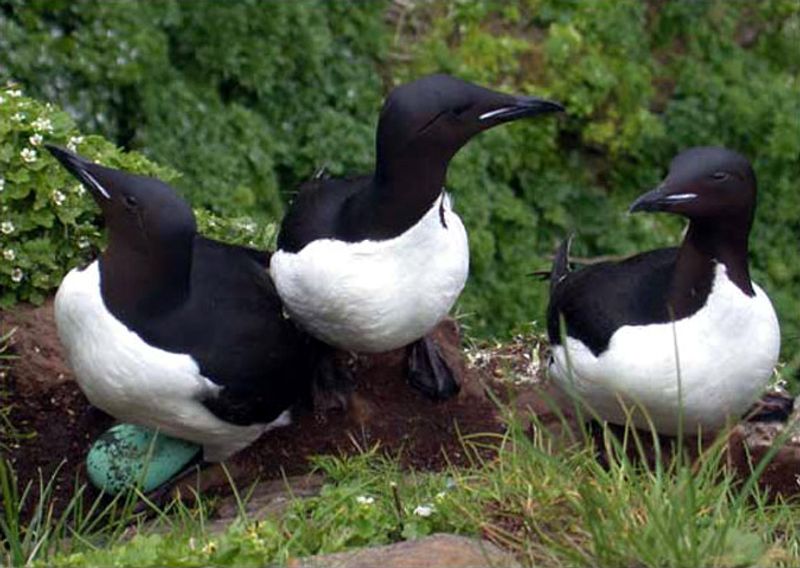
The thick-billed murre, also known as Brünnich’s guillemot, is a species of seabird in the auk family. It is named after Morten Thrane Brünnich, a Danish zoologist who first studied the bird in detail.
The North Pacific subspecies of the thick-billed murre, Uria lomvia arra, is black in color and has a very deep bill.
This subspecies is sometimes referred to as Pallas’ murre, in honor of the scientist who first described it. The thick-billed murre is a common sight along the rocky coasts of the northern Pacific Ocean.
It prefers to nest in colonies on rocky islands and cliffs and generally lays two eggs at a time.
Its diet primarily consists of fish, mollusks, and crustaceans, which it dives to depths of up to 60 meters to catch. The thick-billed murre is a valuable species to the environment, as it helps to keep the populations of its prey in check.
It also serves as an important source of food for other species, such as eagles, owls, and gulls. Unfortunately, the species is threatened by human activities such as overfishing and pollution. As a result, its populations are declining in some areas.
Conservation efforts are needed in order to ensure its long-term survival.
| Kingdom | Animalia |
| Phylum | Chordata |
| Class | Aves |
| Order | Charadriiformes |
| Family | Alcidae |
| Genus | Uria |
| Species | U. lomvia |
15. Glaucous Gull
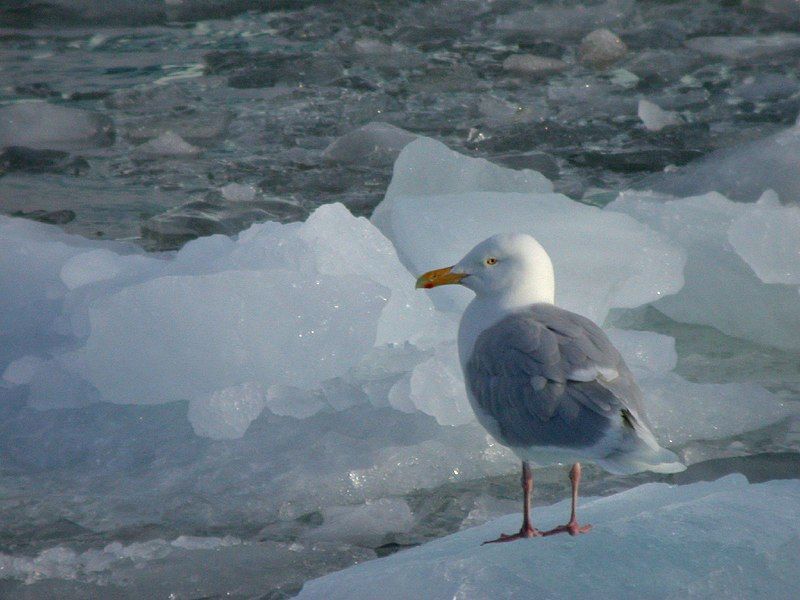
The glaucous gull is an impressive bird, measuring up to almost three feet in length. It is the second-largest gull species in the world, which is why its scientific name, Larus glaucescens, is derived from the Latin word larus, which means “large seabird”.
The glaucous gull is a large greyish-white bird, with a white head, neck, and underparts. Its wings have a distinctive white patch, and its bill is yellow with a black tip. It has a striking yellow eye-ring, making it quite unmistakable when in flight or perched.
Glaucous gulls inhabit coastal areas of the Arctic Ocean and its adjoining seas and are also known to inhabit some inland areas near large bodies of water. They are opportunistic feeders, often scavenging for food and taking advantage of human-associated food sources.
Glaucous gulls will often congregate around fishing vessels, hoping to feed on bycatch and discarded fish. They are also known to feed on insects, crustaceans, small birds and mammals, and eggs.
| Kingdom | Animalia |
| Phylum | Chordata |
| Class | Aves |
| Order | Charadriiformes |
| Family | Laridae |
| Genus | Larus |
| Species | L. hyperboreus |
16. Curlew Sandpiper
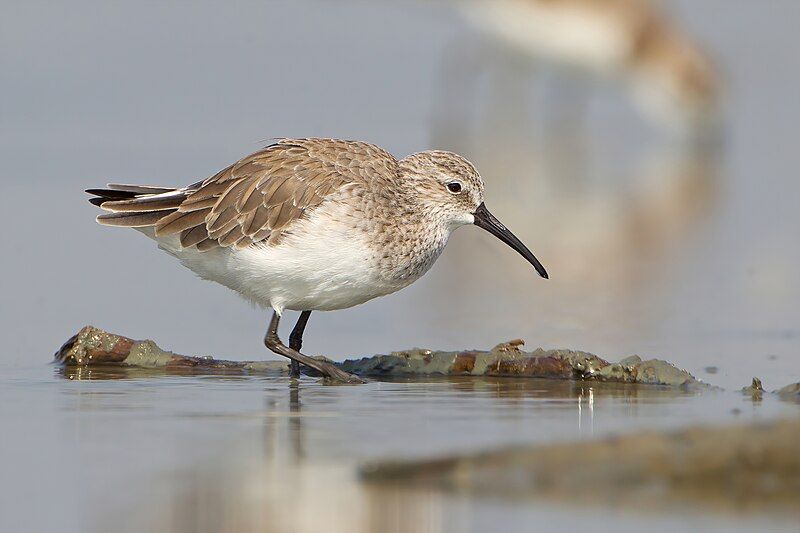
The curlew sandpiper is a small-sized bird belonging to the Wader family, which is also known as a shorebird. It breeds in the tundra regions of Arctic Siberia during the breeding season.
This bird is strongly migratory, which means that it undertakes long-distance travels to spend its winters in Africa, south and southeast Asia, Australia, and New Zealand. Occasionally, it can also be seen as a vagrant in North America.
This species of wader is typically seen in coastal areas, where there are shallow waters or mudflats where it can feed on small invertebrates. It has a grey-brown upper body, white underparts, and a long, curved bill. It also has long, pointed wings and a white-tipped tail.
The curlew sandpiper is a relatively small wader, measuring only about 20 cm in length. Migration is an important part of its life cycle, as it needs to move to warmer climates during the winter months.
During the summer, it returns to its breeding grounds in the Arctic tundra, where it can find food and suitable nesting sites.
The curlew sandpiper is an important species in terms of global biodiversity, as its presence in different parts of the world helps to maintain healthy ecosystems.
| Kingdom | Animalia |
| Phylum | Chordata |
| Class | Aves |
| Order | Charadriiformes |
| Family | Scolopacidae |
| Genus | Calidris |
| Species | C. ferruginea |
17. Pin-tailed Snipe
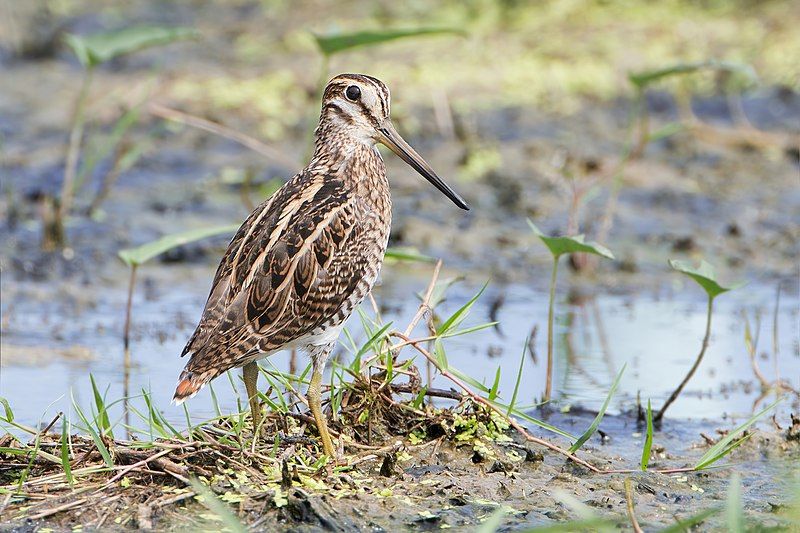
The pin-tailed snipe or pintail snipe is a species of bird that is part of the sandpiper bird family, Scolopacidae. It is a wading bird, meaning it lives in and around wetlands and shallow waters.
The snipe is a medium-sized bird, with a long beak and distinctive black and white stripes on its head. Its tail is long and pointed, hence its name.
It is an omnivore, meaning it eats both plant and animal material, and its diet includes insects, worms, crustaceans, and seeds. The pin-tailed snipe is a migratory bird, which means it travels long distances to warmer climates during the winter months.
It is found in parts of Europe, Asia, and North America. During the breeding season, the snipe will form monogamous pairs, with the male bird performing a courtship dance to attract a mate.
The female snipe will then build the nest and incubate the eggs. The pin-tailed snipe is a common species, and its population is considered to be stable. While it is not considered endangered, it is vulnerable to habitat loss, and its numbers continue to decline in some areas.
Conservation efforts are underway to protect this species and its habitat.
| Kingdom | Animalia |
| Phylum | Chordata |
| Class | Aves |
| Order | Charadriiformes |
| Family | Scolopacidae |
| Genus | Gallinago |
| Species | G. stenura |
18. Spoon-billed Sandpiper
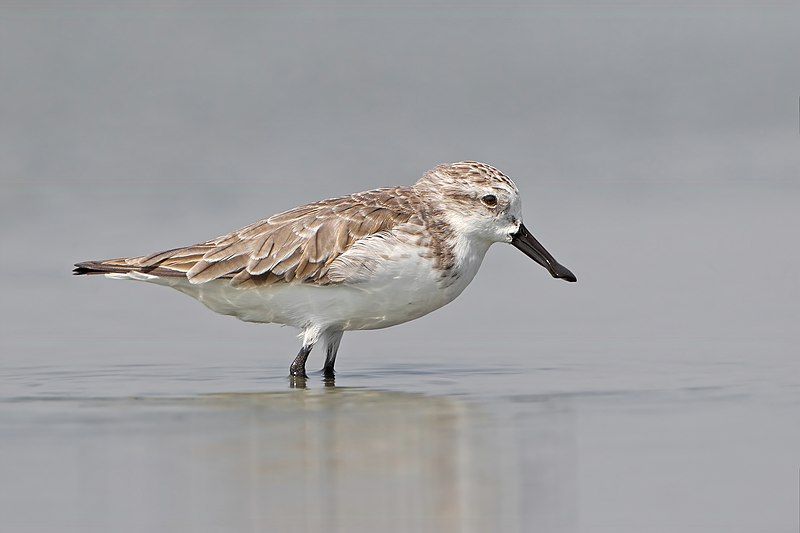
The spoon-billed sandpiper is an endangered species of wader that breeds on the coasts of the Bering Sea and winters in Southeast Asia. It is estimated that since the 1970s, the breeding population of this species has decreased significantly.
By the year 2000, estimates suggested that there were only 350-500 of these birds left in the wild.
This is a drastic reduction from the population numbers prior to the 1970s. The spoon-billed sandpiper is a small, migratory bird that relies on its coastal breeding grounds for survival.
Unfortunately, human activities such as the construction of dikes, dredging, and other coastal development have had a considerable impact on the bird’s habitat.
This has led to a decrease in the number of spoon-billed sandpipers, and the population continues to decline despite conservation efforts. The species is classified as critically endangered by the International Union for Conservation of Nature, and conservationists are working to protect its remaining habitats.
These efforts include the creation of protected areas in the Bering Sea, restrictions on the hunting of the bird, and the development of plans to manage the species’ migratory pathways. Despite the efforts of conservationists, the spoon-billed sandpiper is still in danger of extinction.
In order to ensure that the species survives, more must be done to protect its habitats and reduce the negative impacts of human activities. If these efforts are successful, we may be able to save the spoon-billed sandpiper and prevent it from becoming extinct.
| Kingdom | Animalia |
| Phylum | Chordata |
| Class | Aves |
| Order | Charadriiformes |
| Family | Scolopacidae |
| Genus | Calidris |
| Species | C. pygmaea |
19. Pacific Loon
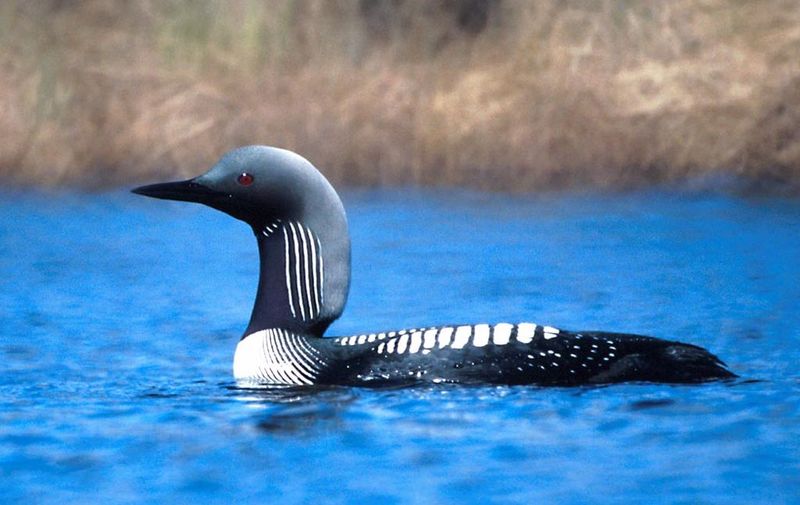
The Pacific loon, also known as the Pacific diver, is a type of waterbird that belongs to the loon, or diver, family. Its scientific name is Gavia pacifica and it is found in the Pacific region of North America.
It is a medium-sized bird, with a length of roughly 21-30 inches and a wingspan of approximately 39-42 inches. It has a white head and neck, a black back and wings, and a light gray body.
Its feet are yellowish-green in color and its bill is black. The Pacific loon is a migratory bird that spends its summers near coastal bays and its winters in the open ocean.
During the summer months, it often enjoys quiet coastal areas where it can feed on a variety of fish and crustaceans. Its diet consists mainly of fish, including salmon, trout, and herring.
It also eats small insects, mollusks, and aquatic plants. The Pacific loon is an important predator of fish, helping to regulate populations of various species.
It is also a valuable indicator of the health of coastal ecosystems, as it is sensitive to water pollution and other environmental changes. It is listed as a species of least concern by the International Union for Conservation of Nature.
| Kingdom | Animalia |
| Phylum | Chordata |
| Class | Aves |
| Order | Gaviiformes |
| Family | Gaviidae |
| Genus | Gavia |
| Species | G. pacifica |
20. Pelagic Cormorant
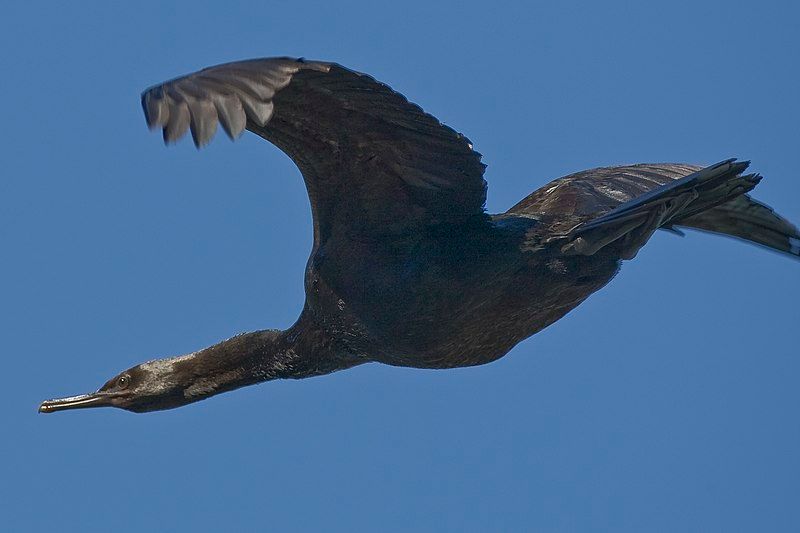
The Pelagic Cormorant is a small bird of the family Phalacrocoracidae. It is also known by other names such as Baird’s Cormorant or Violet-Green Cormorant. It is considered to be similar to other small species of cormorants and is sometimes referred to as the Pelagic Shag.
The Pelagic Cormorant is a seabird and is typically found near the coastlines of the Pacific Northwest and Alaska. It is a migratory bird and can be seen during the summer in the western parts of the United States and Canada.
The Pelagic Cormorant has a blackish-brown body with a white throat and belly. Its wings are a light blue-gray color. It has a slender neck and a long, hooked bill. It is an excellent swimmer and is capable of diving deep below the surface in search of fish.
The Pelagic Cormorant is an important part of its ecology, helping to keep the food chain in balance.
| Kingdom | Animalia |
| Phylum | Chordata |
| Class | Aves |
| Order | Suliformes |
| Family | Phalacrocoracidae |
| Genus | Urile |
| Species | U. pelagicus |
21. Ancient Murrelet
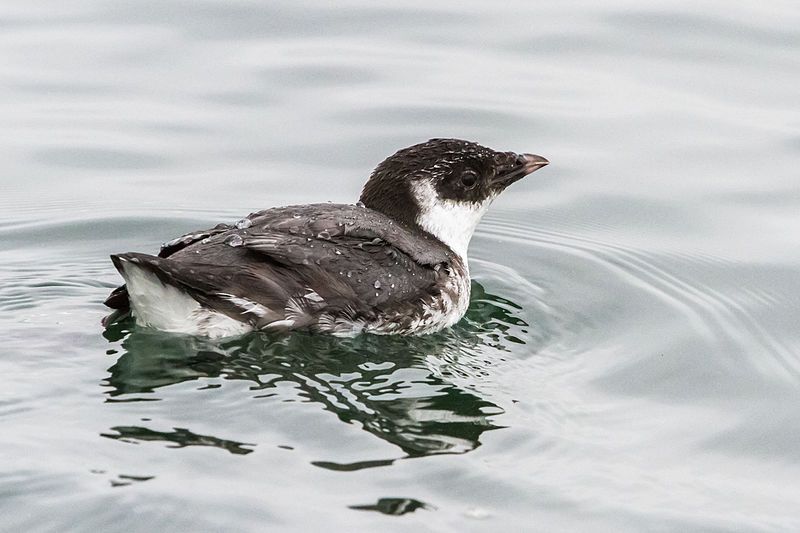
The ancient murrelet is a small seabird that belongs to the auk family. It is found in the northern Pacific Ocean and its name is derived from the English term “murrelet”, which may be an imitation of the call of the common guillemot.
The ancient murrelet has a unique feature that sets it apart from other auk species, which is its grey back that resembles a shawl. This is why it is often referred to as the “ancient” murrelet, as it has a grey appearance that is associated with the elderly.
The ancient murrelet is an important part of the marine ecosystem in the northern Pacific Ocean, as it helps to maintain the balance of the marine food chain.
| Kingdom | Animalia |
| Phylum | Chordata |
| Class | Aves |
| Order | Charadriiformes |
| Family | Alcidae |
| Genus | Synthliboramphus |
| Species | S. antiquus |
22. Yellow-Billed loon
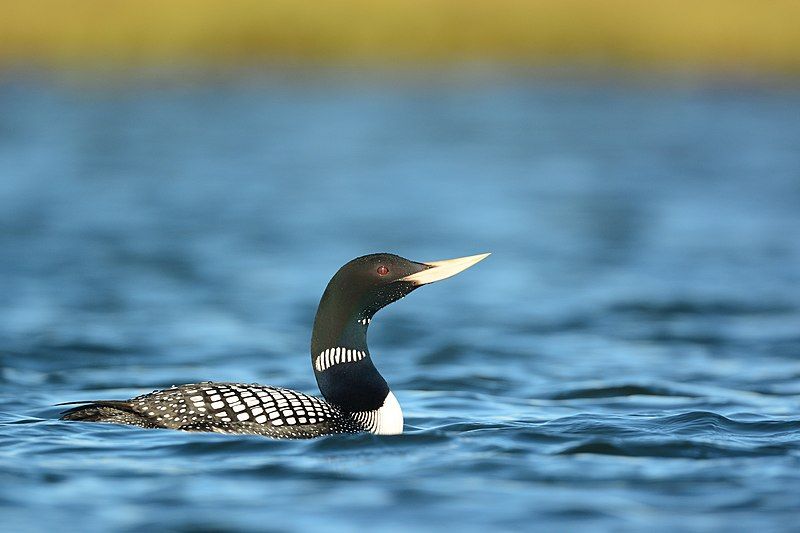
The yellow-billed loon, also known as the white-billed diver, is a large bird belonging to the family of loons and divers. It has a distinct black head, white underparts, and a chequered black and white mantle, which makes it easily recognizable.
During the breeding season, its plumage is particularly striking, with its black head, white underparts, and black-and-white chequered mantle.
But during the non-breeding season, its plumage is much duller, with the chin and foredeck being the only parts of the bird that remain white. The yellow-billed loon is mainly found in the Northern Hemisphere, inhabiting both freshwater and coastal areas.
It is a graceful swimmer, able to dive underwater for up to a minute to catch small fish and other aquatic animals. It is also an excellent flyer, capable of long-distance migrations.
During the breeding season, it can be seen nesting close to water bodies, where it builds a platform of vegetation. The yellow-billed loon is an important species for both its ecological and economic value.
Its feathers are used in traditional tribal clothing and its flesh is a highly valued food source in many cultures. Its conservation status is currently listed as “Least Concern”, as its population is considered to be stable.
| Kingdom | Animalia |
| Phylum | Chordata |
| Class | Aves |
| Order | Gaviiformes |
| Family | Gaviidae |
| Genus | Gavia |
| Species | G. adamsii |
23. Emperor Goose
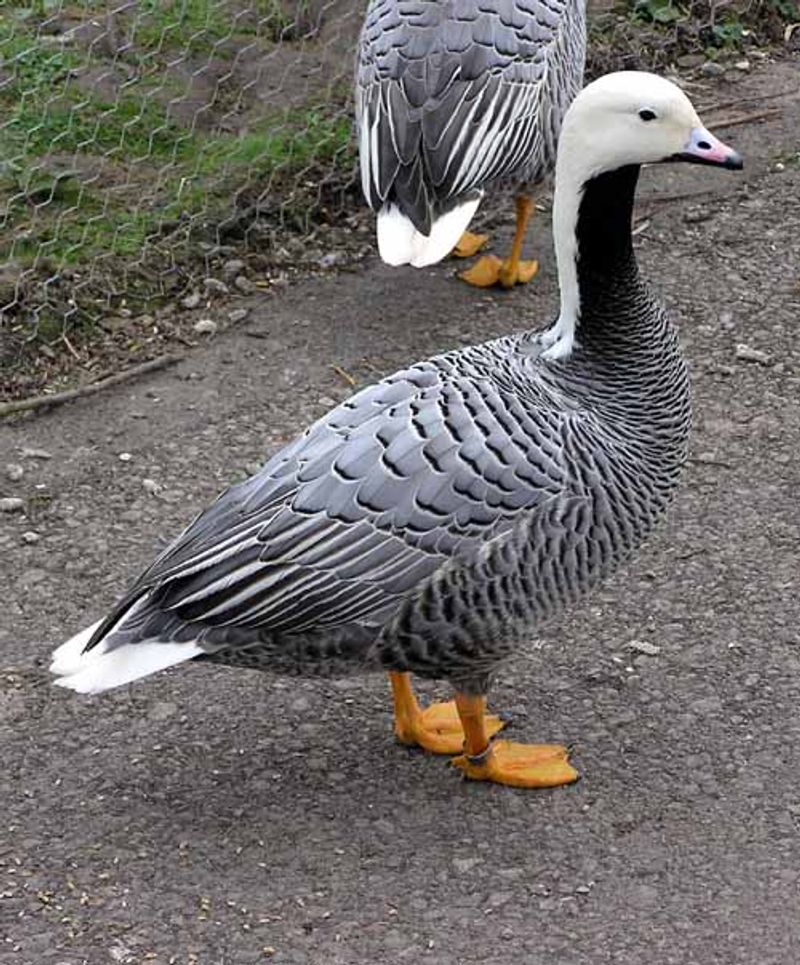
The emperor goose is a species of waterfowl that is part of the Anatidae family, which consists of ducks, geese, and swans. It is also known as the beach goose or the painted goose.
This species is native to Alaska, but it can sometimes be found in Canada and the contiguous United States, especially during the winter months. During the winter, these birds inhabit mudflats and coasts in the areas mentioned above.
They can also be found in estuaries, bays, and deltas. These birds are relatively small, measuring between 18 and 25 inches in length and weighing between 1.5 and 2.5 pounds.
Their plumage is mainly gray, with white patches on the head and neck, as well as small black spots along the wings.
Additionally, their legs and bill are orange and their eyes are yellow. The emperor goose is a herbivore, mainly eating the roots, stems, and leaves of aquatic plants, as well as insects, mollusks, and crustaceans.
During the winter, it often feeds on eelgrass, sea lettuce, and other aquatic vegetation.
They also feed in small flocks and on sandflats, sometimes forming large flocks. The emperor goose is an important species for conservation, as it is considered a species of least concern by the International Union for Conservation of Nature.
It is also a popular game bird, as its meat is highly prized. To ensure the species’ continued existence, it is important to protect its habitat and limit hunting and other human activities that could harm it.
| Kingdom | Animalia |
| Phylum | Chordata |
| Class | Aves |
| Order | Anseriformes |
| Family | Anatidae |
| Genus | Anser |
| Species | A. canagicus |
24. Long-billed Dowitcher
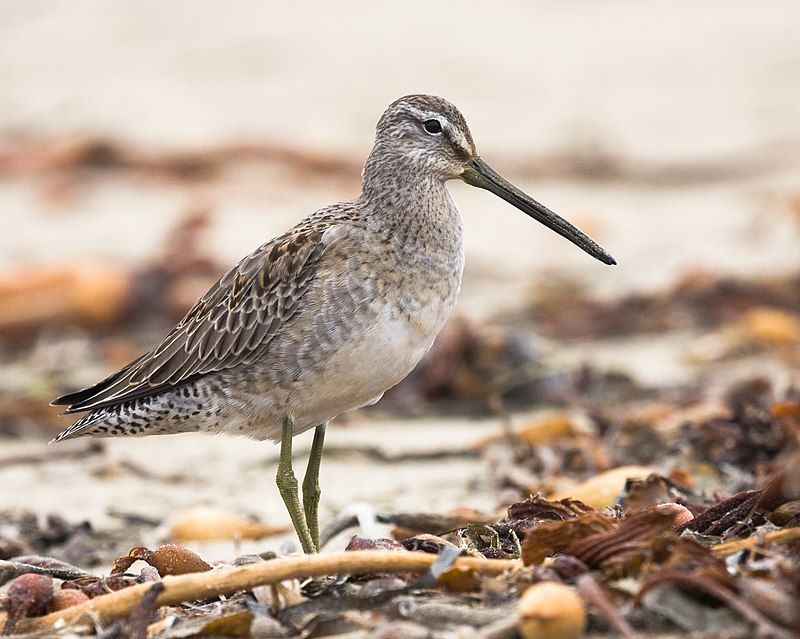
The long-billed dowitcher is a member of the sandpiper family, Scolopacidae, and is a common sight along shorelines. It is a medium-sized shorebird, distinguished by its long bill.
During breeding season, the adults have a striking appearance, with a rufous head and underparts, and a mottled back. The large white upper rump is only visible when the bird is in flight.
The long-billed dowitcher is a migratory species, breeding in the northern hemisphere and wintering in the southern hemisphere. The birds typically feed on small invertebrates, such as insects, worms, and mollusks.
They are usually found in shallow water, probing the mud or sand with their long bills for food. The long-billed dowitcher is an important species in many coastal ecosystems, providing food for predators such as raptors and gulls.
Although the birds are not threatened, their numbers have declined somewhat in recent decades due to habitat loss and degradation. Conservation efforts are necessary to ensure the long-term survival of this species.
| Kingdom | Animalia |
| Phylum | Chordata |
| Class | Aves |
| Order | Charadriiformes |
| Family | Scolopacidae |
| Genus | Limnodromus |
| Species | L. scolopaceus |
25. Broad-billed Sandpiper
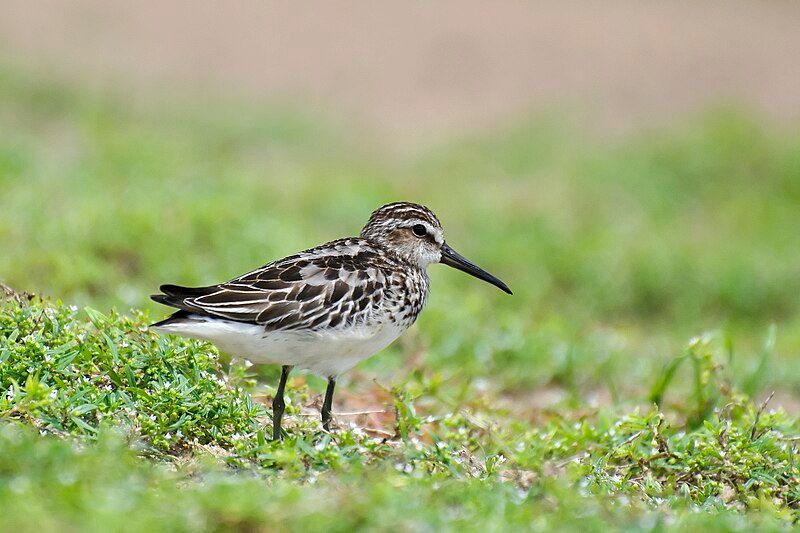
The broad-billed sandpiper (also known by its scientific name Limicola falcinella) is a small wading bird found in wetlands around the world. Its scientific name is derived from Latin, with “falcinella” being derived from the Latin word “falx” or “falcis” which means “sickle”.
It is believed that this is in reference to the bird’s long, sickle-shaped bill. Recent research has suggested that this bird should not be included in the Limicola genus, but rather in the Philomachus genus.
This is because the bird’s morphology, behavior, and nesting habits are more similar to the other species in this genus than to the ones in the Limicola genus. It is thought that this shift could have an impact on future conservation efforts of the species.
| Kingdom | Animalia |
| Phylum | Chordata |
| Class | Aves |
| Order | Charadriiformes |
| Family | Scolopacidae |
| Genus | Calidris |
| Species | C. falcinellus |
26. Steller’s Eider
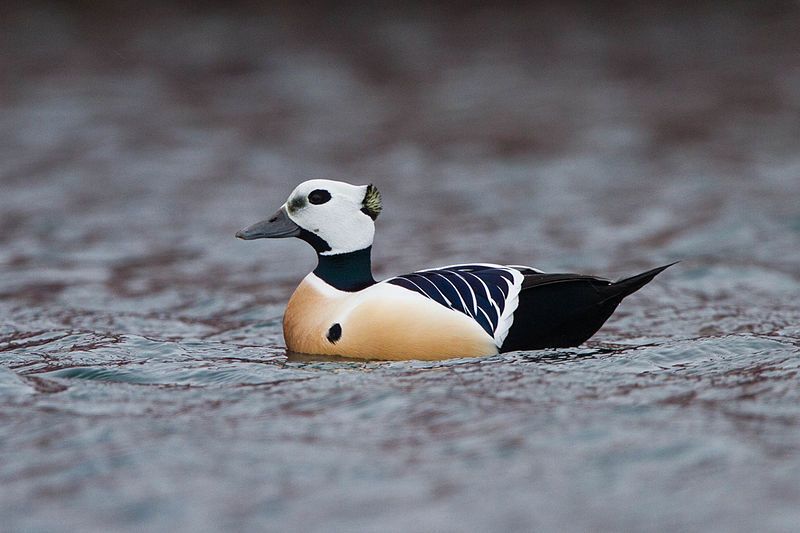
Steller’s eider is a unique species of duck that is found along the coastlines of eastern Russia and Alaska. It is a migratory bird, traveling between these two locations depending on the season.
The bird is a member of the Eider family and is distinguished from its relatives by its small size and impressive flying speed. This makes it the rarest, smallest, and fastest flying species of eider.
Steller’s eider typically feeds on small aquatic organisms such as mollusks, crustaceans, and aquatic insects. It is also known to occasionally consume small fish. The bird is highly sought after by birdwatchers, as it is not often seen in its natural habitat.
Conservation efforts have been put in place to protect this species, as its population numbers are decreasing due to loss of habitat and hunting.
| Kingdom | Animalia |
| Phylum | Chordata |
| Class | Aves |
| Order | Anseriformes |
| Family | Anatidae |
| Genus | Polysticta |
| Species | P. stelleri |
Conclusion
The Kamchatka Peninsula is a unique and important habitat for a variety of birds. Its diverse landscapes and climates provide birds with ample opportunities to thrive and flourish.
The abundance of food sources, nesting grounds, and migratory bird pathways make the area an important stop for many species of migratory birds.
With the increasing threats to many bird species, it is vital that we protect and conserve this important habitat in order to ensure that these birds can continue to use it for generations to come.